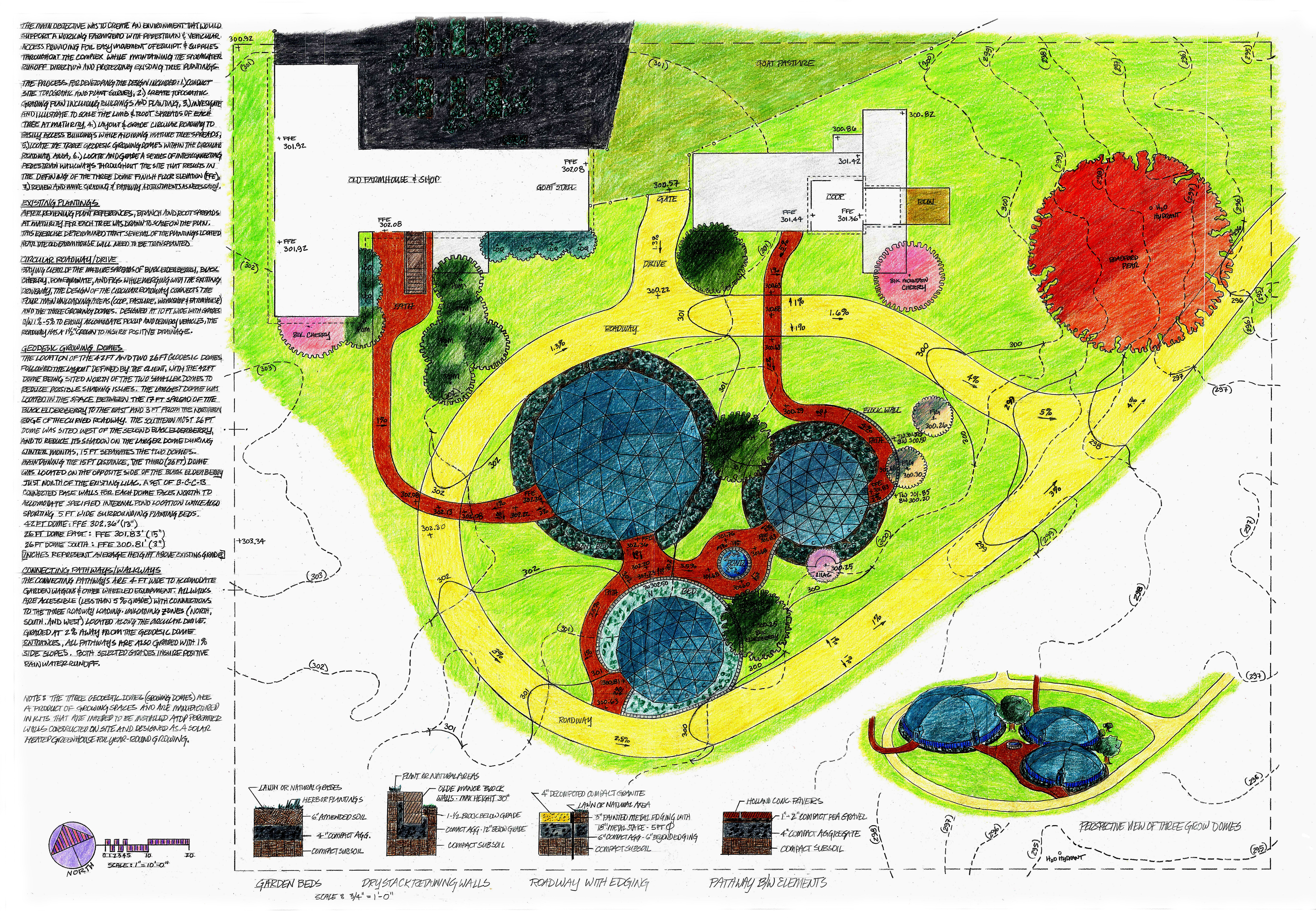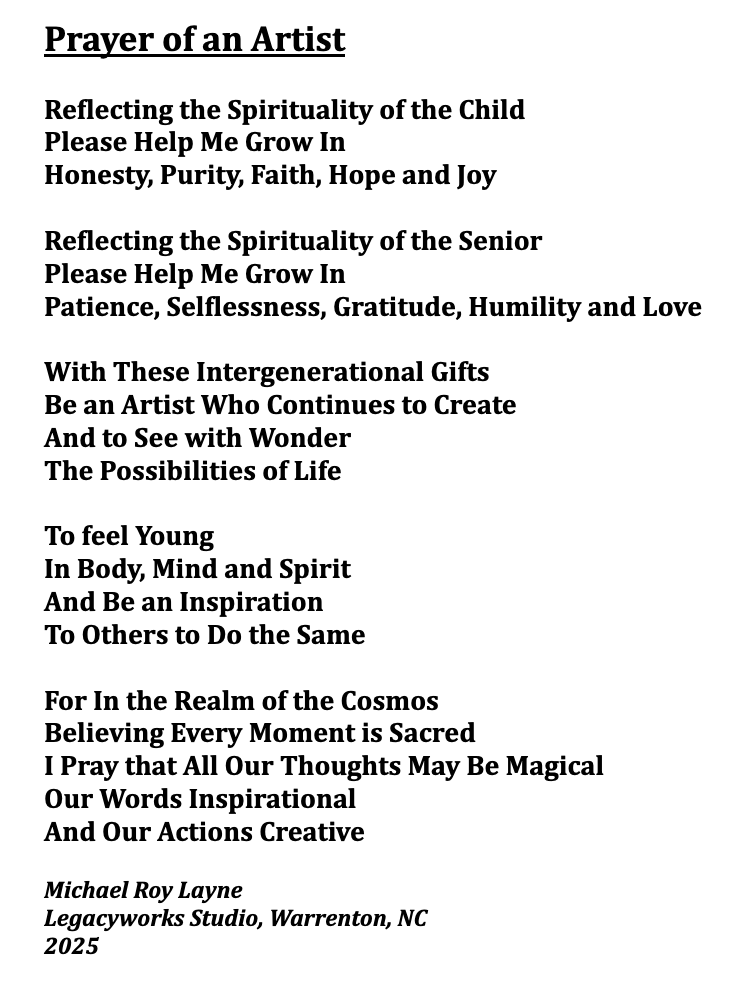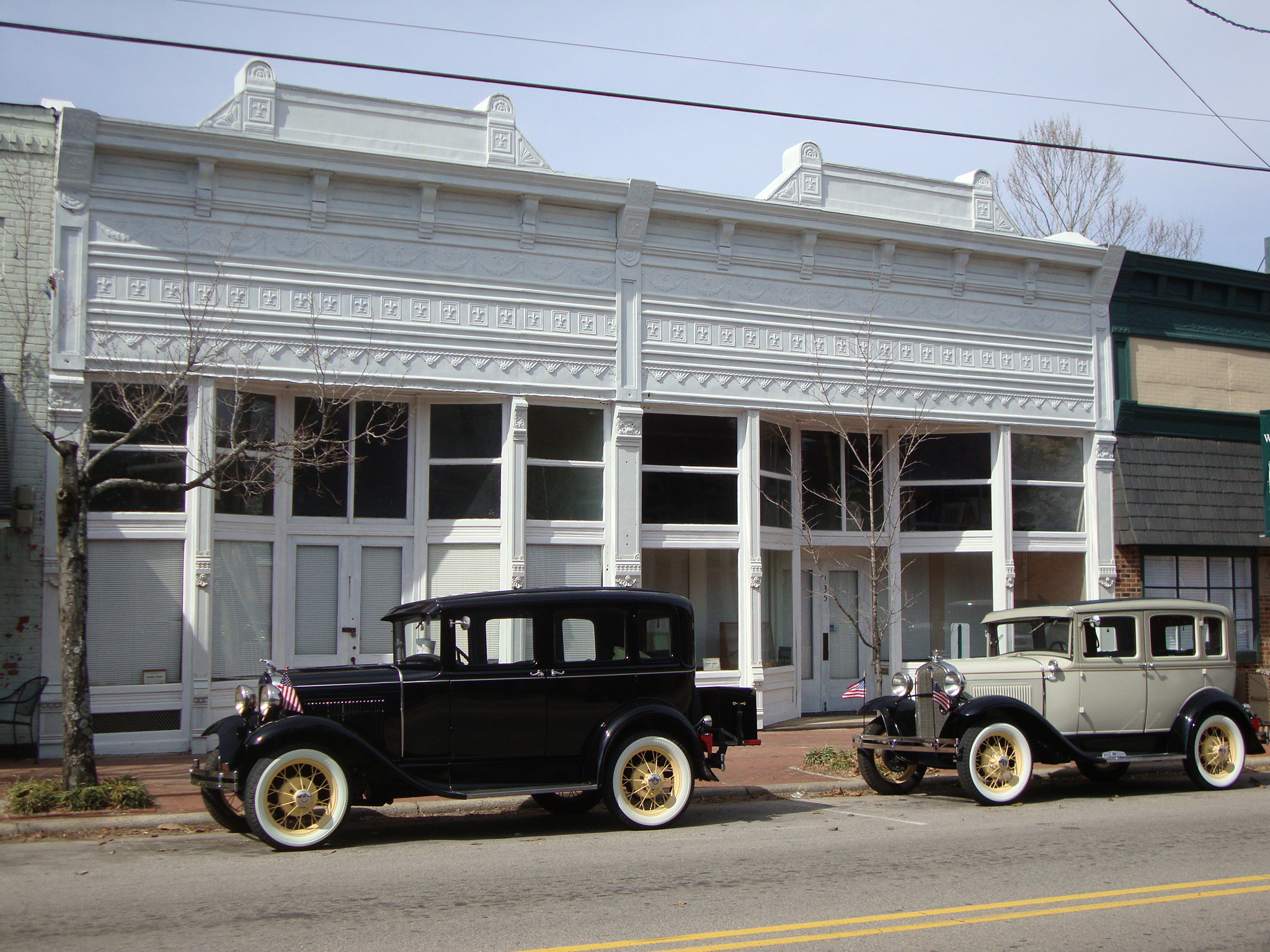Urban Farmstead
Site-specific environmental sculptural landscape design proposal – Franklin County, NC
- Completion Date: December 2021
- Media: Various hardscape and landscape materials and geodesic domes
- Proposed Location: Pomerantz/Gerards Farmstead, Castalia, NC
- Client: Julie Pomerantz and Swen Gerards
- Dimensions: Approximately 1 acre
Click to Read Full Description
The main objective of Urban Farmstead was to design an environment organized around three geodesic growing domes that would support a working farmstead with pedestrian and vehicular access providing easy movement of equipment and supplies throughout the complex of flora and fauna supportive buildings. Besides maintaining the existing topographic southerly direction of stormwater runoff, the design sought to maintain and protect the existing tree plantings wherever possible.
The process employed to develop the design included in the following steps: 1) conduct a site topographic and plant survey, 2) create a topographic grading plan of the existing buildings and to locate and define existing plantings, 3) investigate and illustrate to scale the limb and root spreads of each tree or shrub at maturity, 4) locate, layout and grade circular roadway to easily access buildings while avoiding mature tree spreads, 5) locate the three geodesic growing domes within the circular roadway area, following the layout defined by client, 6) locate and grade a series of interconnecting pedestrian walkways throughout the site resulting in defining the three dome finish floor elevations (FFE), 7) review the design and make grading and pathway adjustments as necessary to meet dome FFEs, existing topography, and roadways, resulting in the addition of short retaining walls along the southern and eastern domes to protect existing trees elevations, guard a dome from vehicular traffic, and improve pathway rain water runoff.
Exiting Plantings
After reviewing plant references, the branch and root spreads, at maturity, for each of the trees and large shrubs located within the farmstead area were drawn on the plan to scale. This exercise determined that many of the plantings located near the old farmhouse and shop would need to be thinned and transplanted
Circular Roadway/Drive
Staying clear of the mature speads of the Black Elderbery, Black Cherry, Poagranite and Fig Trees located at the top of the plan area while merging with the exising driveway, the design of the circular roadway connects the four main unloading areas (foul coop, goat stall and pasture, workshop and upstairs farmhouse). Designed at 10 ft wide to easily accomodate pickup trucks and delivery vehicles, the roadway has a 1½” crown along the middle to insure positive drainage. To insure easy unloading of hay bales and large feed bags, an additional draiveway spur connects the circular drive with the gate into the goat stall and pasture.
Geodesic Growing Domes
The location of the three geodestic domes (1@42’ and 2@26’) followed the layout defined through discussions with client, with the largest dome being located north of the two smaller domes to reduce possible shading of smaller domes and to take advantage of southern exposures. The 42 ft dome was sited first with the southern most 26 ft dome (shown in photographic imges) sited west so as to reduce its shadow on the larger dome during winter months, 15 ft separates the two domes. Maintaining this 15 of separation between all three domes, the third 26 ft geodestic dome was located last. The surrounding 5 ft wide planting beds adjacent to the short wall of each dome accomodates plants that would require protective shade to the northside or protection from winter winds and winter sunshine heat to the south side.
Connecting Pathways/Walkways
The connecting pathways are 4 ft wide to accomodate garden wagons and other wheeled equipment. All walks are accessible (less than 5% grades) with connections to three unloading zones (north, south and west) along the curicular drive. Graded at 2% away from entrances to the geodesic domes, all pathways are also graded with 1% side slopes, both to facility postive rainwater runoff.
Gallery
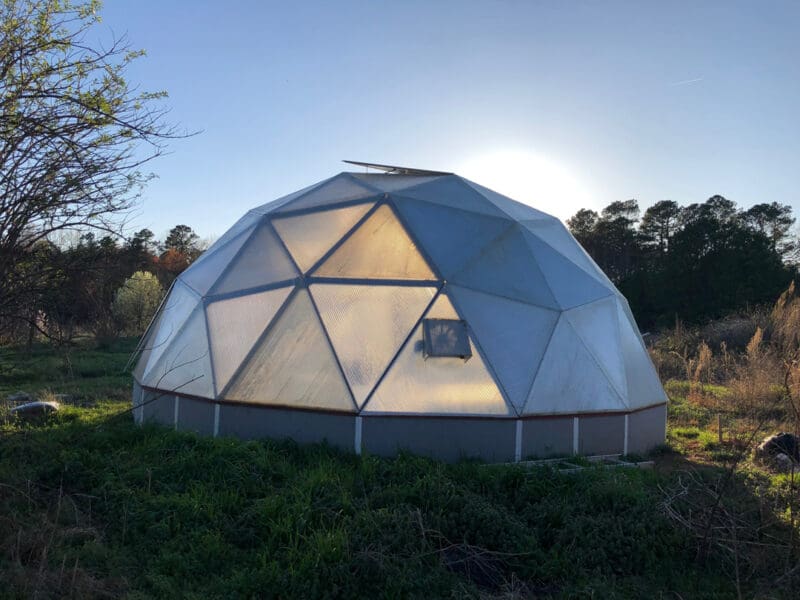
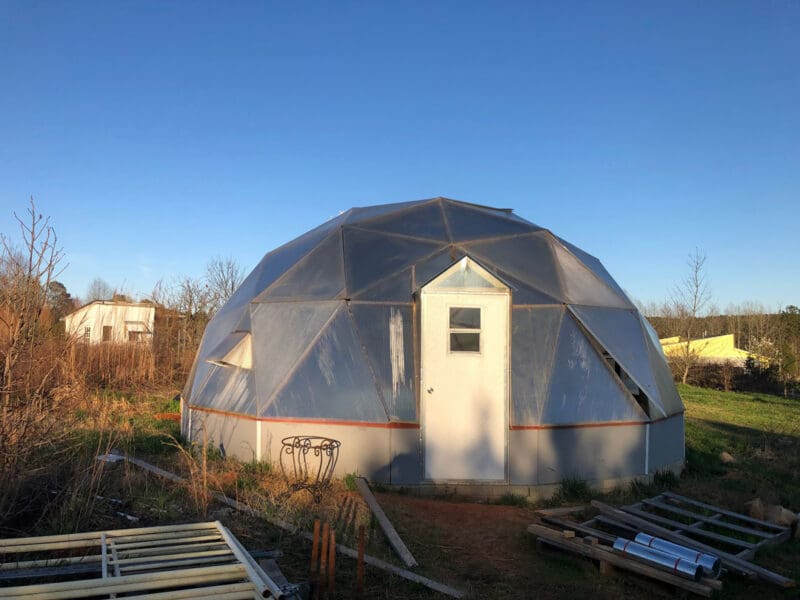
Large Scale Sketches
Click to Enlarge
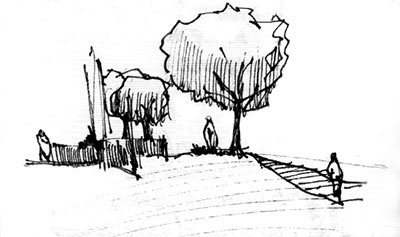
"My sculptural environments are aesthetically pleasing site-specific artworks that connect nature and culture by employing the three legacies for regenerative and sustainable design of (1) environment: natural systems, (2) education: experiential systems, and (3) engagement: cultural systems. By using a variety of art media and fabrication methods to create sculptural open spaces that are intended to support personal rejuvenation and inspiration, my sculptures provide venues for environmental learning and community celebration.”
Contact

Environment, Education, Engagement
Michael Roy Layne, Ph.D., RLA, ASLA
Environmental Sculptor • Landscape Architect • Community Artist
Studio/Workshop
135 South Main Street
Warrenton, North Carolina 27589
Office
442 S. Main Street
Warrenton, North Carolina 27589
Contact Me
